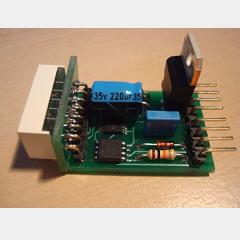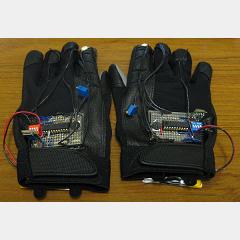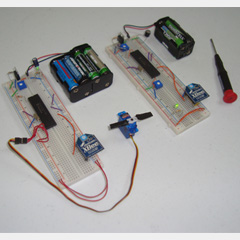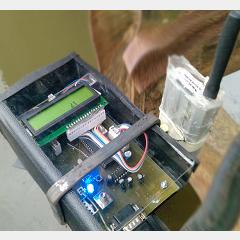Categories
- animatronics (12)
- apple (11)
- arduino (179)
- art (41)
- articles (121)
- artificial intelligence (11)
- automation (421)
- avr (205)
- bitcoin (3)
- breadboard (9)
- cameras (57)
- cars (26)
- cell phones (28)
- clothing mods (21)
- console mods (26)
- dangerous (94)
- desktop mods (24)
- embedded (5)
- flying things (54)
- fpga (22)
- gaming creations (108)
- interface (225)
- internet (17)
- laptop mods (6)
- lasers (22)
- linux (7)
- magnetic (3)
- medical (12)
- microcontrollers (51)
- misc projects (152)
- msp (12)
- music (124)
- pic (90)
- projects (23)
- pyroedu (76)
- raspberry pi (26)
- robots (312)
- security (36)
- sensors (307)
- software (200)
- solar (19)
- stamp (9)
- tools (149)
- tutorials (98)
- Uncategorized (45)
- usb (44)
- wireless (256)
Sponsors


Posted January 27, 2012 by Chris
“This is a new design for a universal gear indicator that can be fitted to any motorcycle as an aftermarket accessory. Its main advantage is that its operation depends entirely on the gear shift lever movement, instead of connecting to speedometer and tachometer sensors….It consists of a main circuit including a 7 segment LED indicator, two Hall sensors that are attached to the motorcycle frame, and a small magnet placed on the gear shift lever.”

Posted January 26, 2012 by Chris
“In this project we have used two types of different R.F Module like 433Mhz and 315Mhz Interface into Pic16f877a,HT640 for R.F Encoder,HT648 for R.F Decoder Ic’s.Hence in this we have to use two sensors one is for temperature sensor LM35, another one is potentiometer, the two sensors have an output of analog signal so that analog signal is fed into to two adc channel of pic16f877a and the corresponding digital output is get from the serial port, continuously watching the real time parameter monitoring purposes.”

Posted January 21, 2012 by Chris
“The inverted pendulum balancer is a radio controlled car modified by adding a plexiglass platform and an inverted pendulum with free rotating pivot. The electrical component of the balancer brings together computational hardware (Atmel Mega32 MCU), an input angle sensor (US Digital Optical Encoder), and an output motor driver (NI LMD18200 H-Bridge) onto a single board whose sole purpose is to autonomously control the motion of the car in order to keep the pendulum from falling.”

Posted January 5, 2012 by Chris
“Using an ATmega 2560 and therefore the heart of Arduino, we have developed a remote control with GSM. This allows to control 2IN/2OUT, DTMF key, gate control and GSM thermostat activated remotely. The control is simple to use, thanks to the availability of several libraries that allow you to do anything to the Arduino; if there is not really a specific library, you can modify an existing one.”

Posted January 1, 2012 by Chris
“An RFID reader is a device which is used to communicate with RFID tags by receiving and transmitting signals. These signals use radio waves for wireless communication. RFID tag is applied to products, individuals or animals to identify and track them. The identification is done through a unique serial number. This topic covers the interfacing of a passive RFID system with AT89C51.”

Posted December 30, 2011 by Chris
“For our final project, we designed and built an RFID-based proximity security system for use with Cornell Identification cards, which have been RFID-embedded since fall of 2003. The idea for this project was sort of spawned from our general interest in RFID technologies and the near-simultaneous occurance of Lab 2 and the antiquated lock system at our fraternity house breaking.”

Posted December 27, 2011 by Chris
“The Glove Mouse is a former 6.111 [digital electronics lab] project by Tony Hyun Kim (EECS ’09) and Nevada Sanchez (EECS ’10), in which we demonstrated intuitive control of a map application using only one’s hands. We liked the project so much, that we kept it alive during our free time even after the class. Most recently, we upgraded the gloves with wireless transmitters in March 2010.”

Posted December 22, 2011 by Chris
Today’s article shows you how to build a basic wireless input and output system in the form of a single transmitter and single receiver. Communication is one way to keep things simple with two xbee modules being used for the wireless link. In the end, a small trimpot will control the movement of a servo motor.

Posted December 21, 2011 by Chris
“This project is based on obdev’s RemoteSensor and their firmware only USB implementation, the main change is the replacement of the analog sensors with a SHT11 digital temperature and humidity sensor. The sensor unit consists of an ATTiny45 MCU, a SHT11 sensor, and a hoperf RFM12 868 MHz transceiver module. It is powered by 2 AA cells and is expected to give >1 year of battery life.”

Posted December 3, 2011 by Chris
“The main purpose is to gather water level data, store it in central database and view it on a web interface. This system can greatly reduce the effect of sudden water level increases due to rain, causing floods. Also, it minimizes the man power requirement to measure water levels in the reservoirs in distant areas.”







